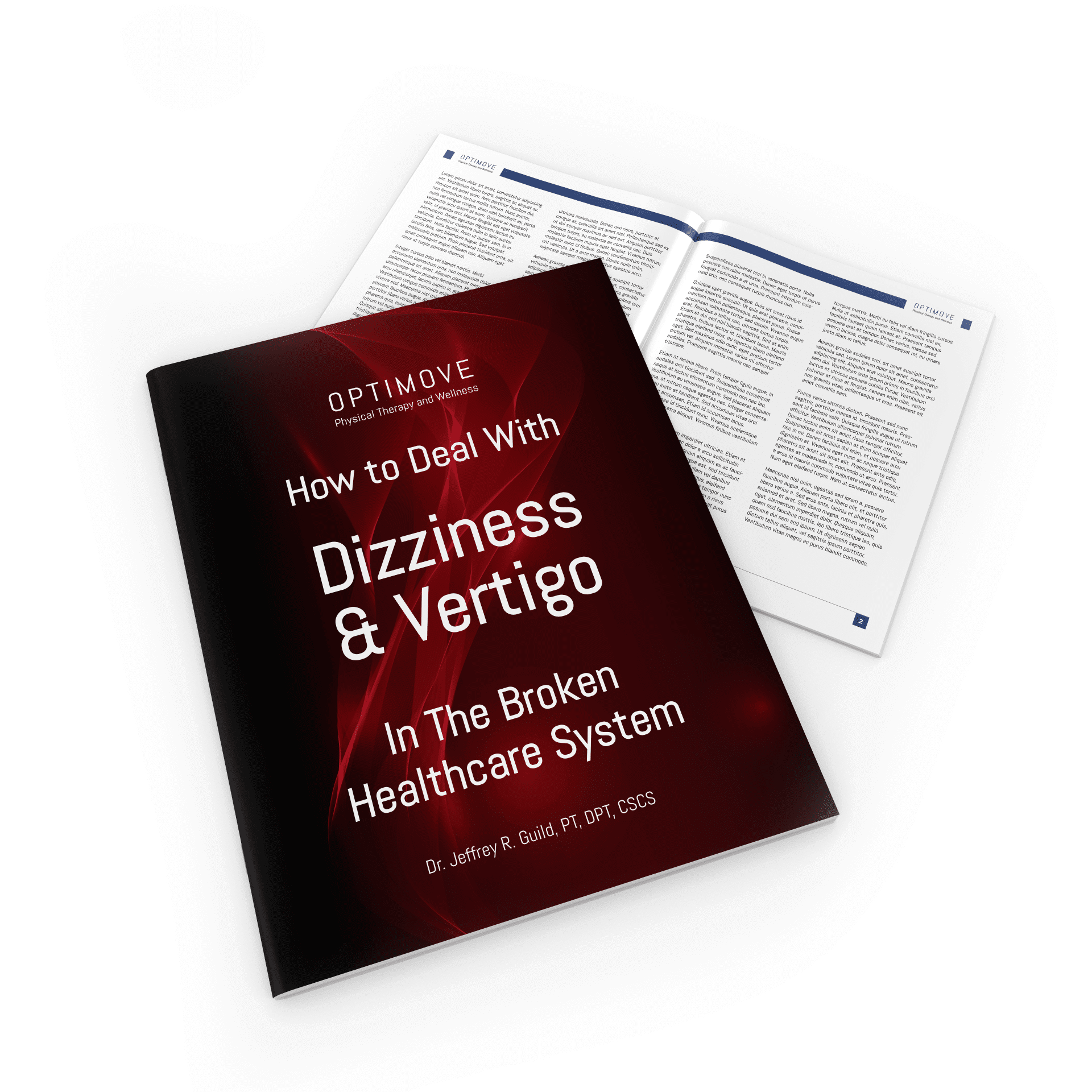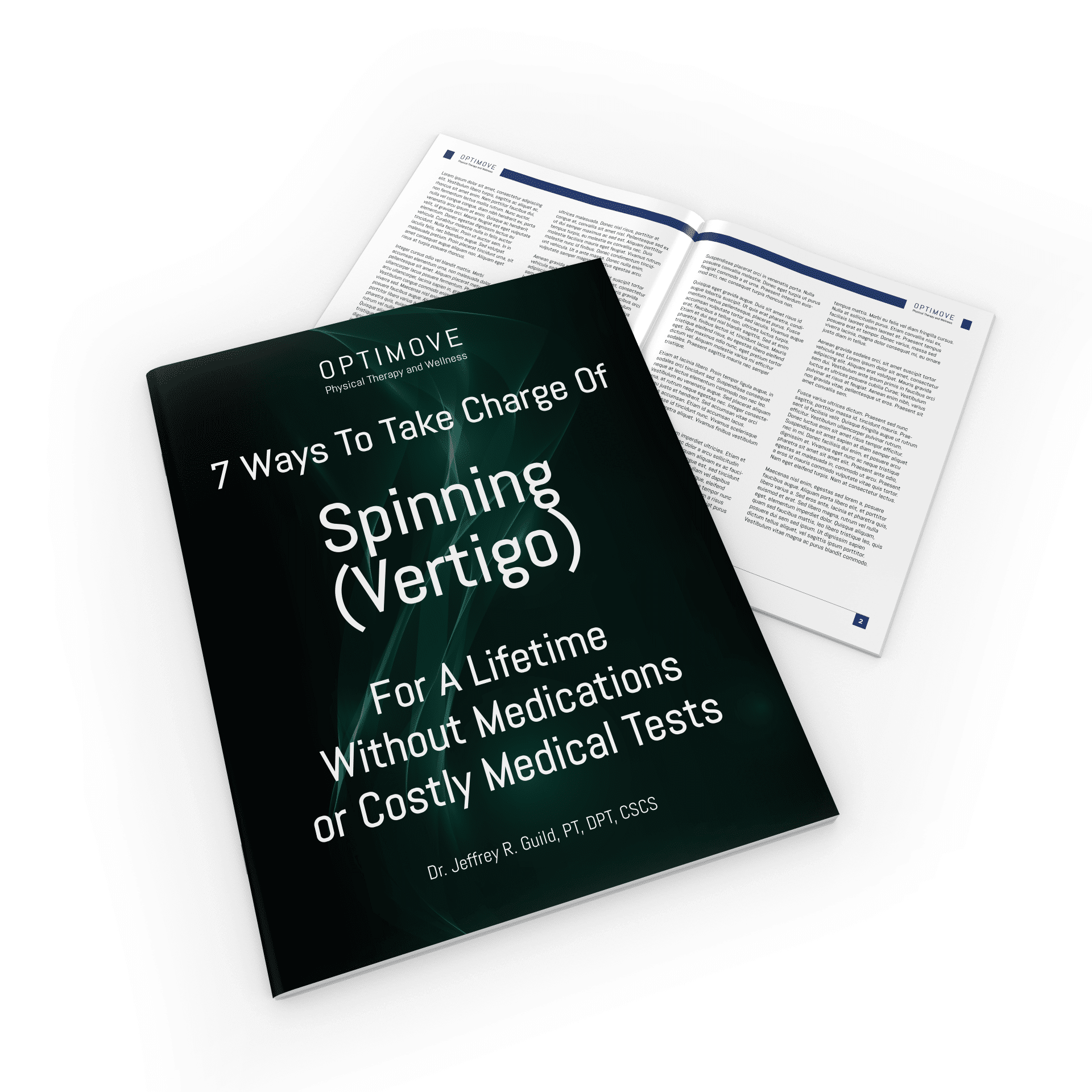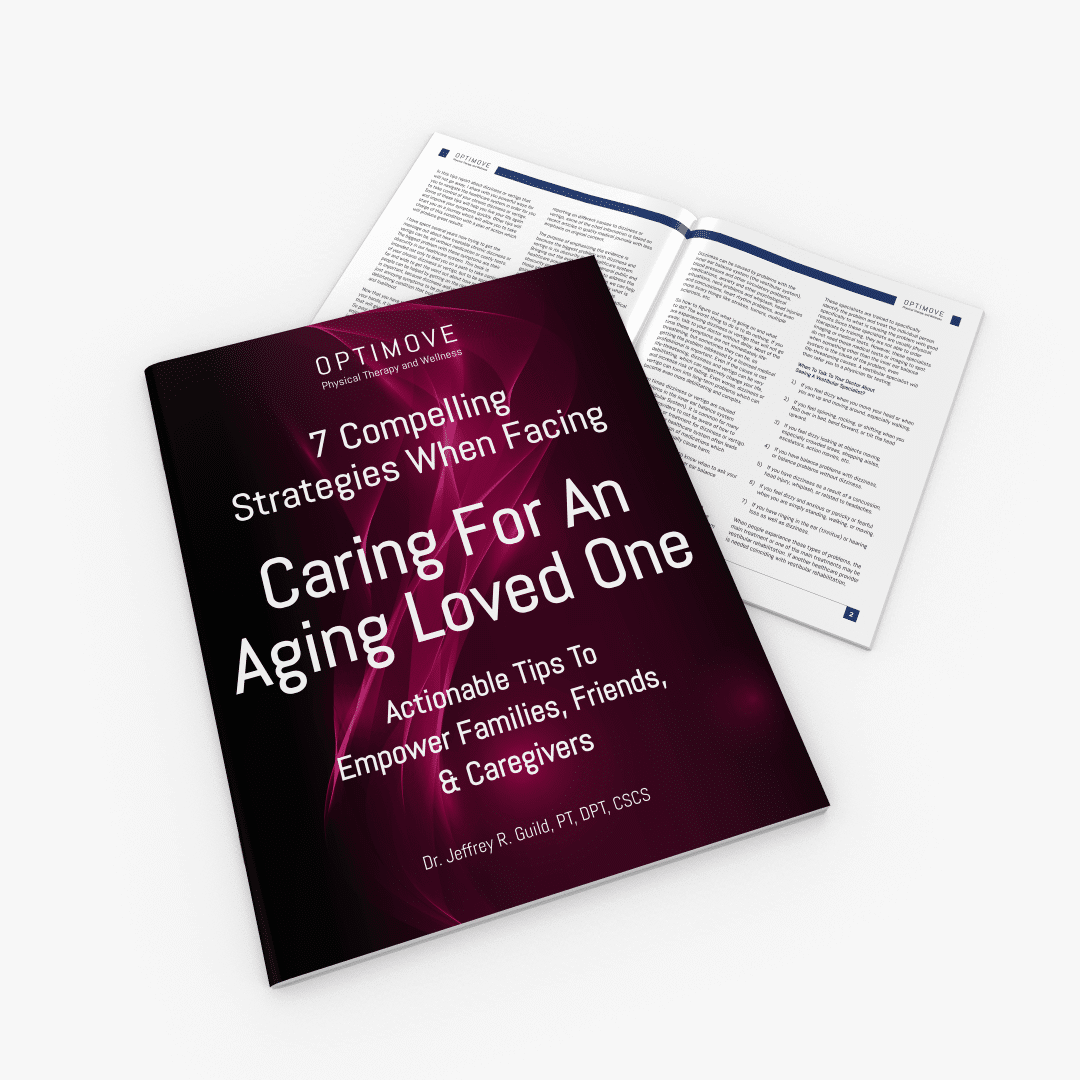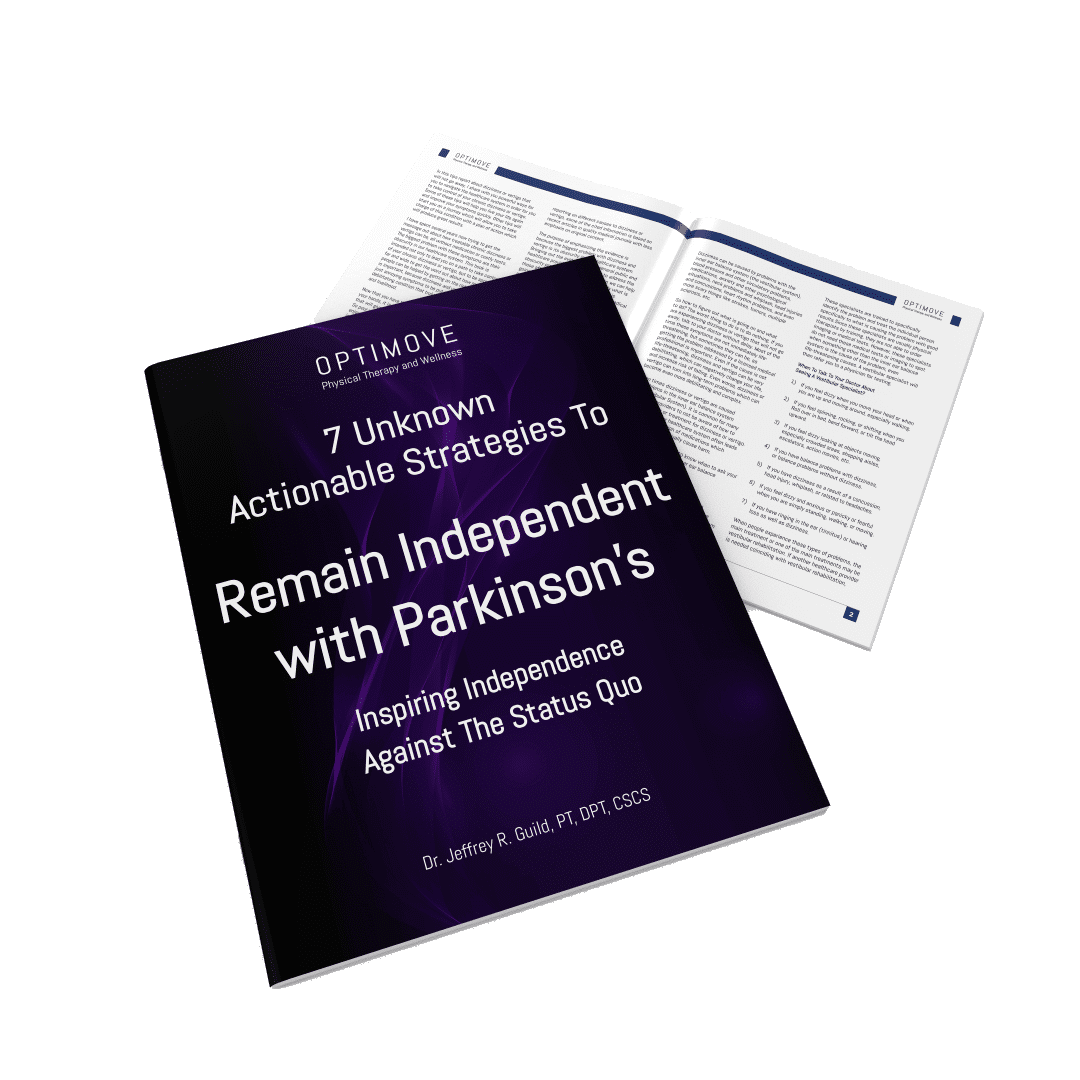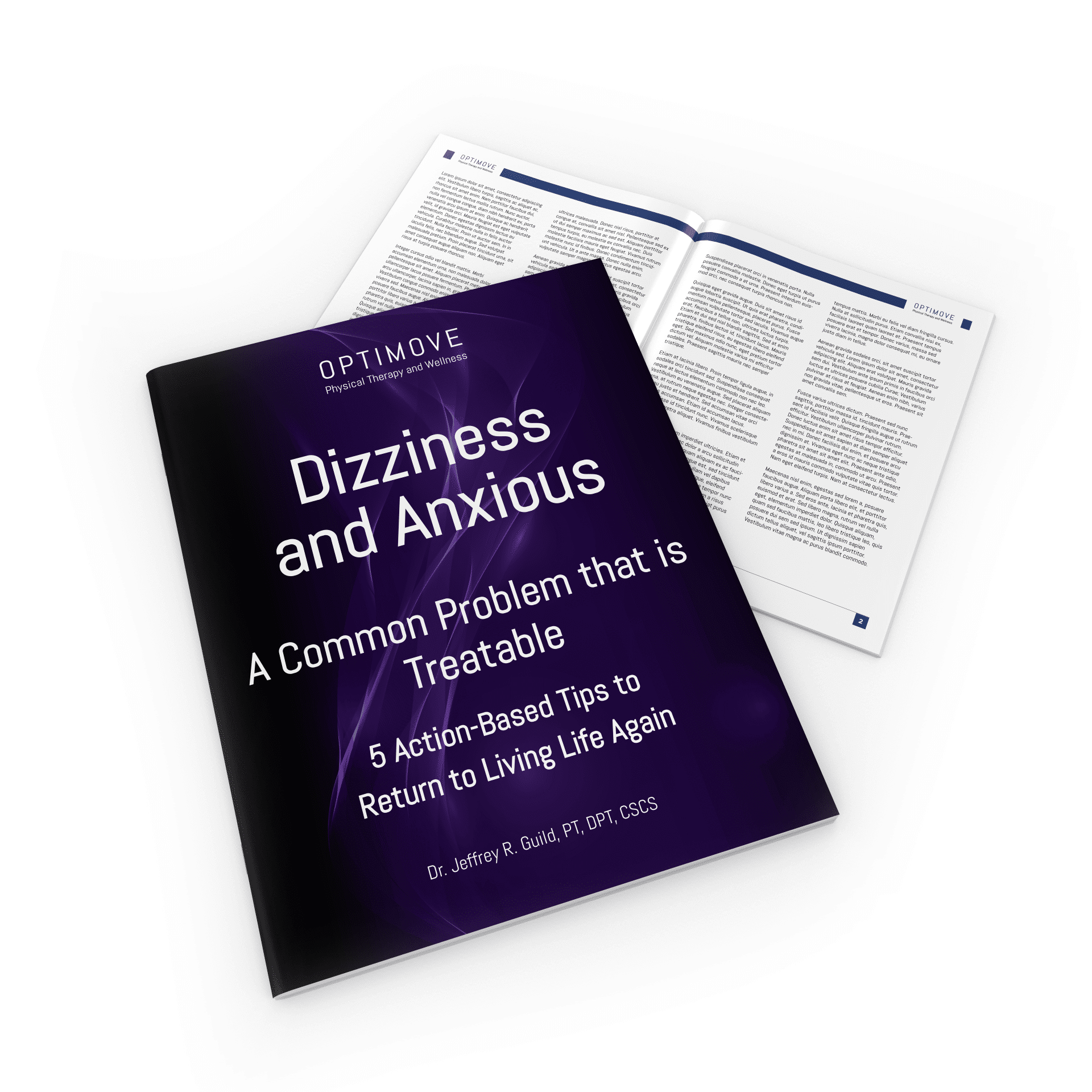This is what happens when our balance system deteriorates, it often happens as we grow older.
–
Do you or an aging loved one struggle with balance and falls? There is hope. Let us empower you to maintain your independence at home and in the community.
Click the link below to book your free in-home discover visit: https://old.optimovedfw.com/balanceandfallsfb
“What happens when that system becomes weak?” we often find out that this can happen. It can happen with younger individuals; it can happen with older individuals. Oftentimes, when we see younger individuals, they’ll often come to us with a very specific vestibular disorder, or very specific balance or neurological disorder, or if they didn’t develop – you know – in childhood for some reason.
Whereas with older individuals, it might be a very specific diagnosis or neurological disorder or a vestibular disorder. But we’ll tend to see a lot more just kind of weakness of the vestibular system, kind of general decline of the vestibular system, due to mostly lack of use. Yes, there’re some physiological anatomical changes that occur as people get older, but a lot of the decline is very much due to the fact that people don’t use their balance system as much as they get older.
They are farther away from childhood, when in the form of play, they were spinning around and very much actively stimulating their balance system. They could do quite a bit of things without getting dizzy or enjoying the dizziness. So, what someone needs when they have a balance problem is specific, individualized treatment. Why?
The balance system is very complex. It’s kind of a whole group of systems. You have your vestibular system, your main central balance system. It’s a neurological system. It’s not an inner ear system, although one of the main organs for the vestibular system is in the deep inner ear. But, that is just one part of it.
The rest of the vestibular system is basically throughout the central nervous system. It goes to the brainstem, the cerebellum, and throughout parts of the cortex, and then all the way down the spinal cord and back up. And there’re relay stations basically in the brainstem, and of course, important feedback from the cerebellum and the cortex as well. And all this goes together to allow us to balance.
But, we also have to get what we call sensory information from our legs. So, what’s sensory information? It’s what we call proprioception, a big fancy word for basically: you have joint receptors in all of your joints that tell your brain about where they are in space.
So, you can basically close your eyes and move your arm, and be able to try to touch your nose. You don’t actually touch your nose, or if you choose not to, you don’t have to. There’s, of course, the cerebellum which allows the smoothness of the movement, but you also have proprioception which allows you to just automatically know where your joints are in space, without actually hitting your finger to your nose, if that’s what you’re choosing to do.
And so, this is a very specialized sensory mechanism and that information goes up to our brain. Of course, we have these receptors in the joints of our legs, and those receptors in the joints of our legs basically tell our brain about where we are in space. That allows our legs to just automatically know where they are.
You can think of an athlete, let’s say a wide receiver, and they’re running to catch a ball, and their legs are all over the place, and the wide receiver is focusing on catching the ball. They don’t have to think about where their legs are, and that’s proprioception at work. We don’t have to think about where our legs are in space because our joint receptors, through our central nervous system, basically take care of all that for us. It is automatic, we don’t have to think about it.
So in very basic, real-life things, if you’re not a wide receiver, it’s going up on or stepping up on curbs, and stepping down curves, it’s going up slopes, it’s climbing stairs.”


